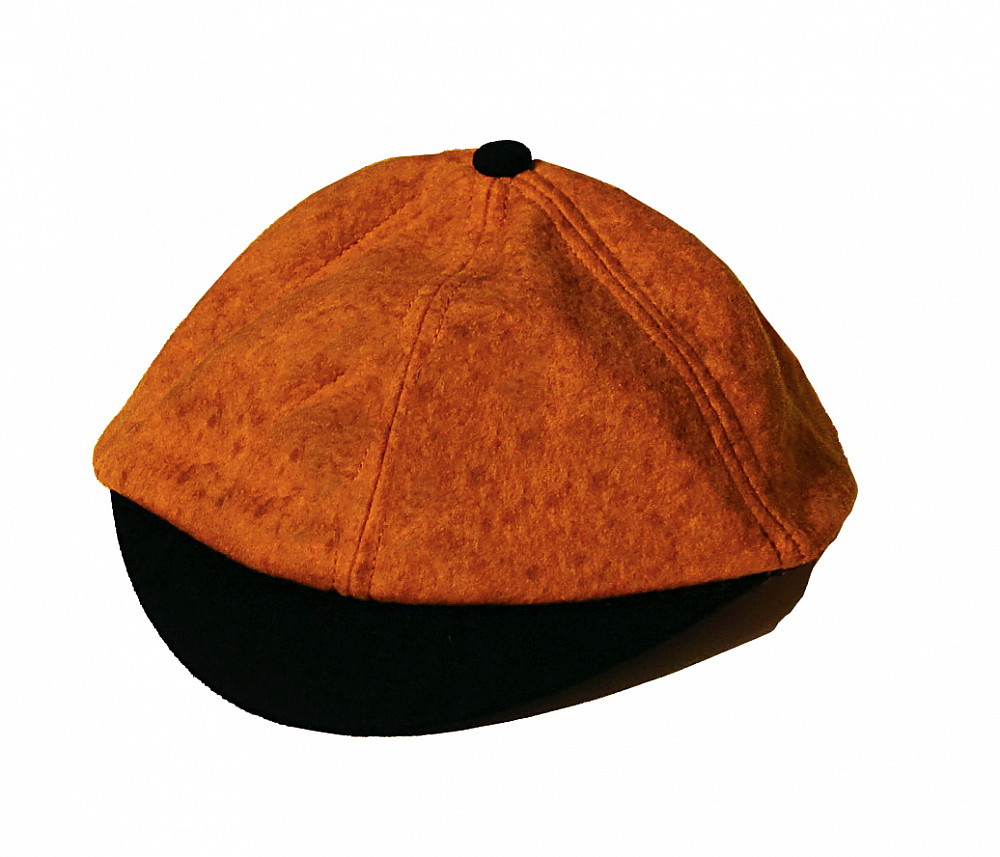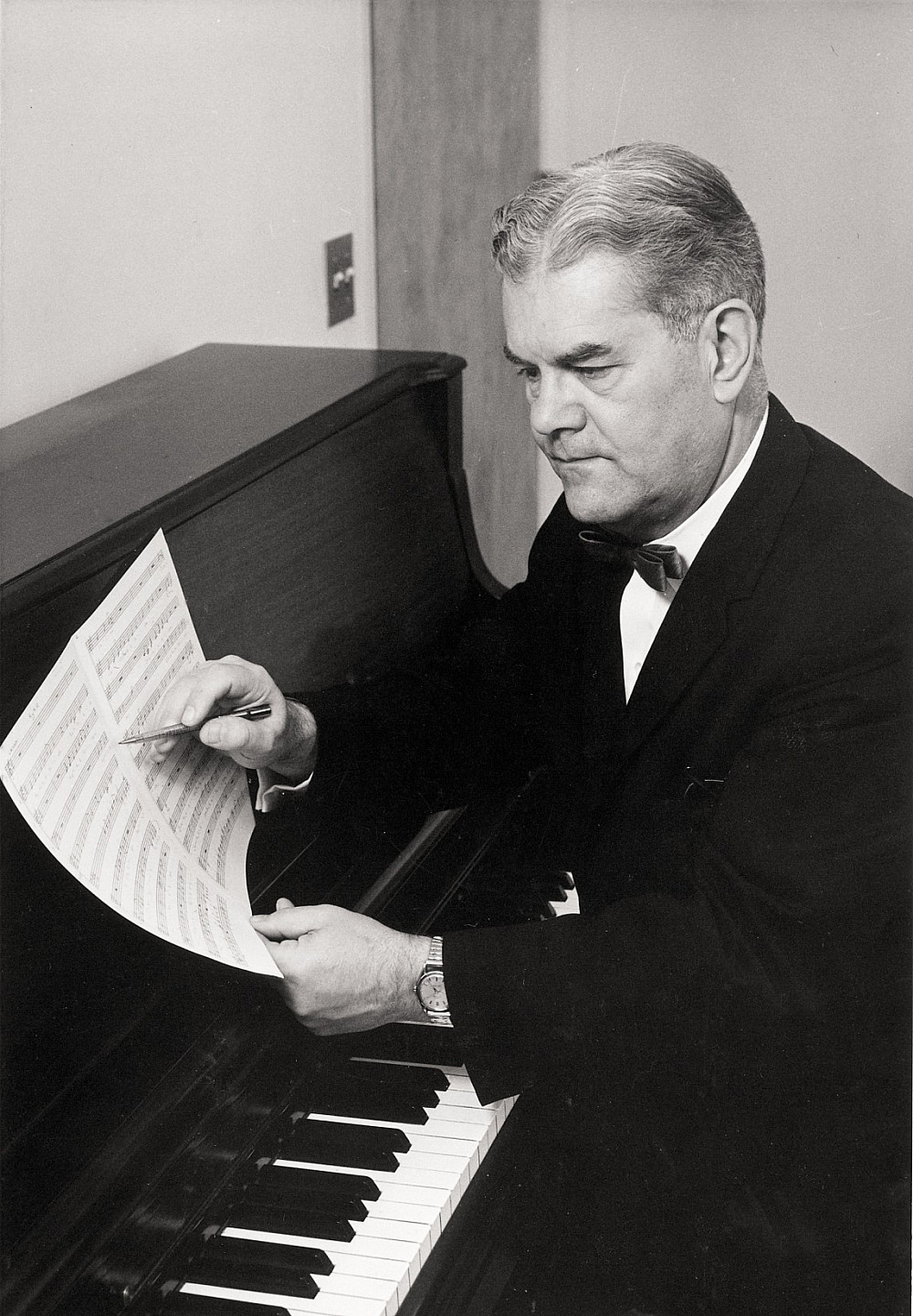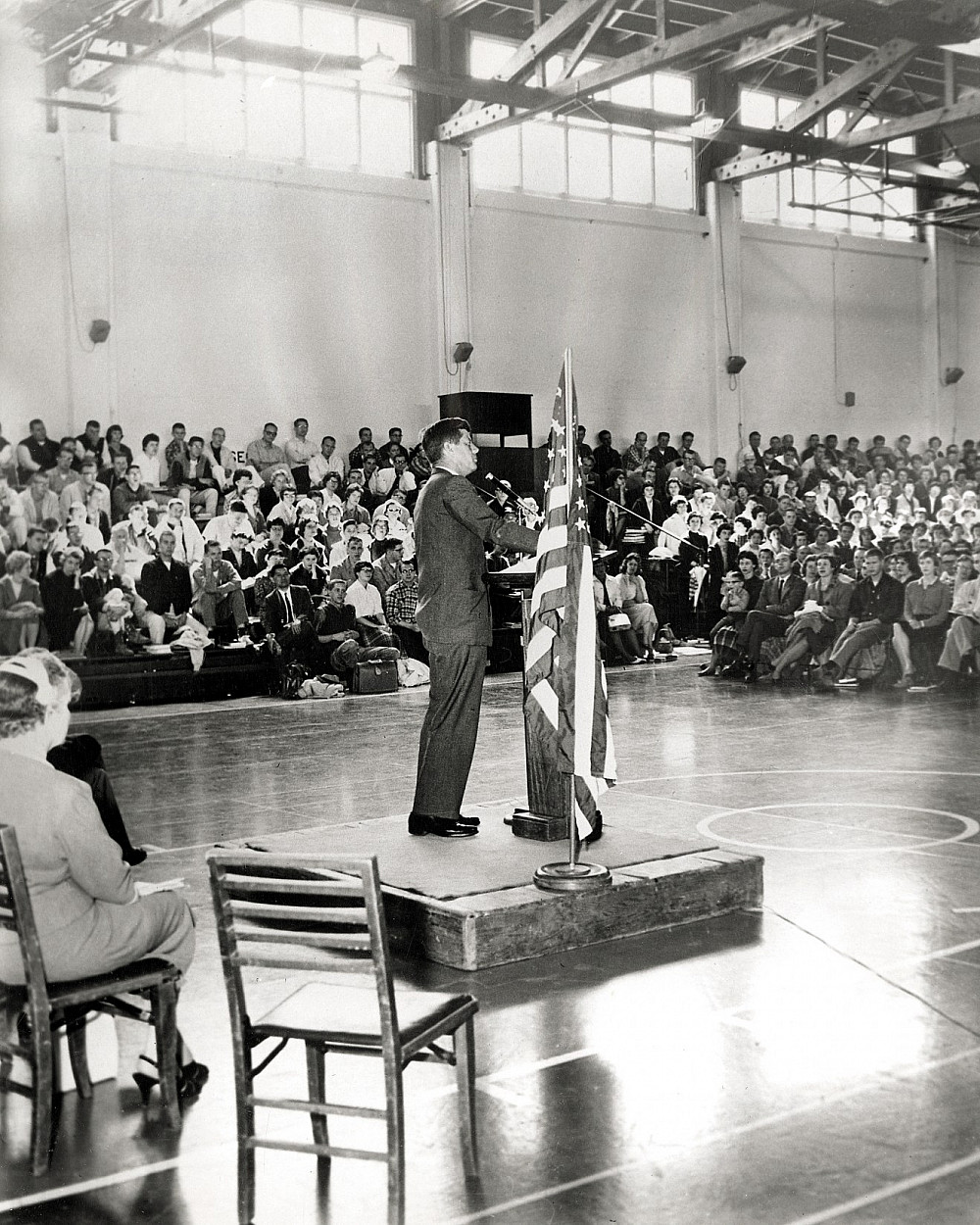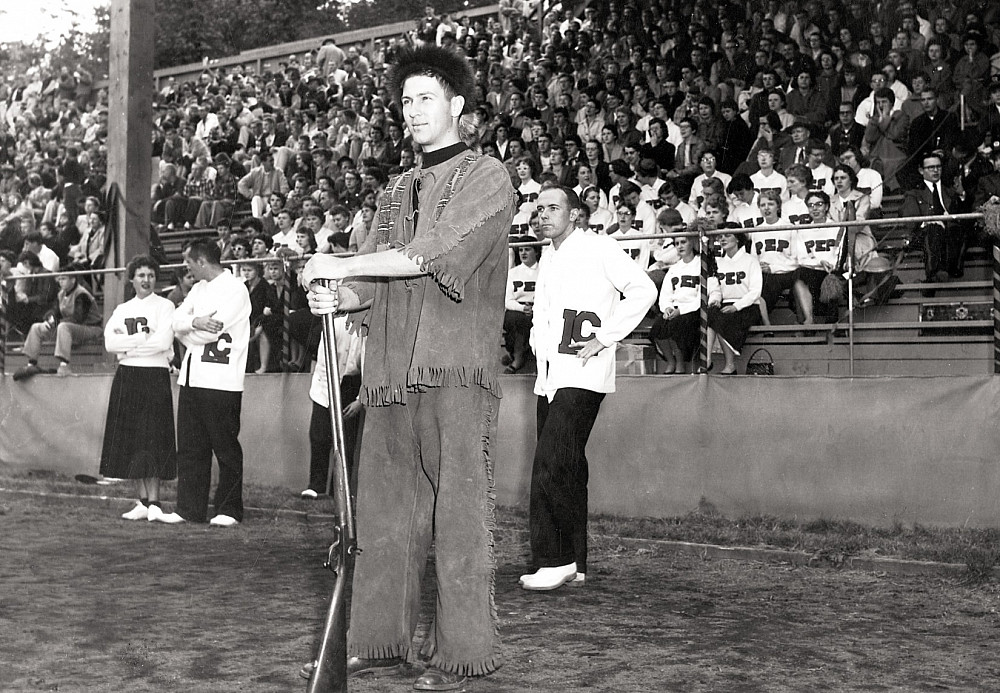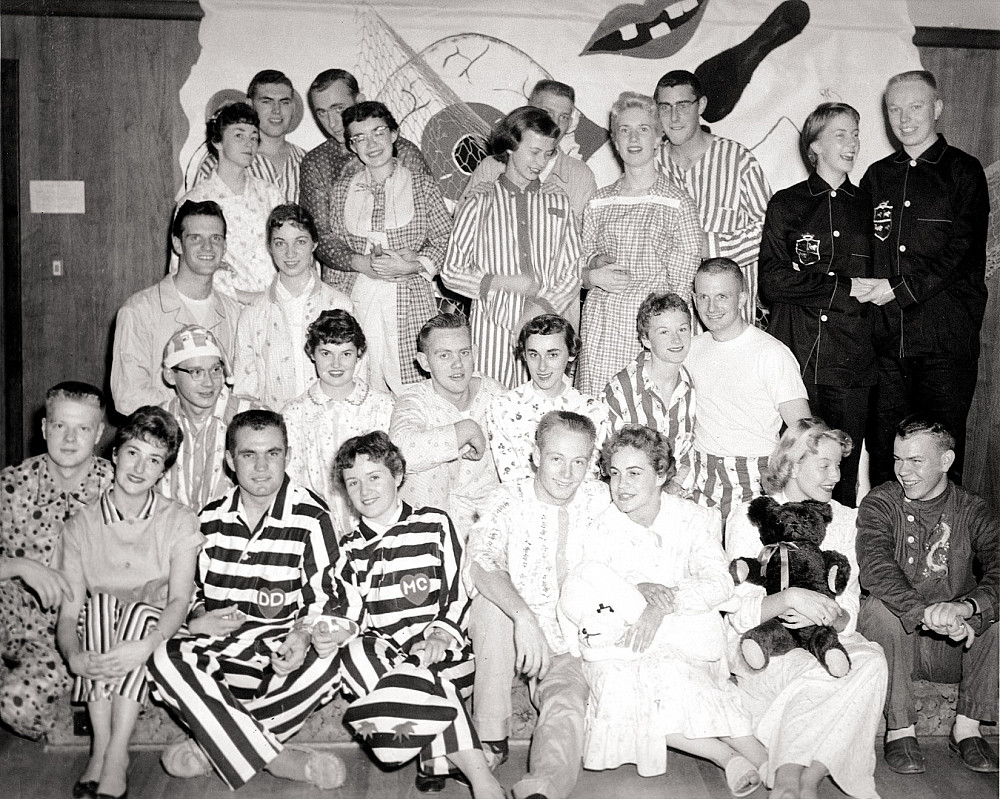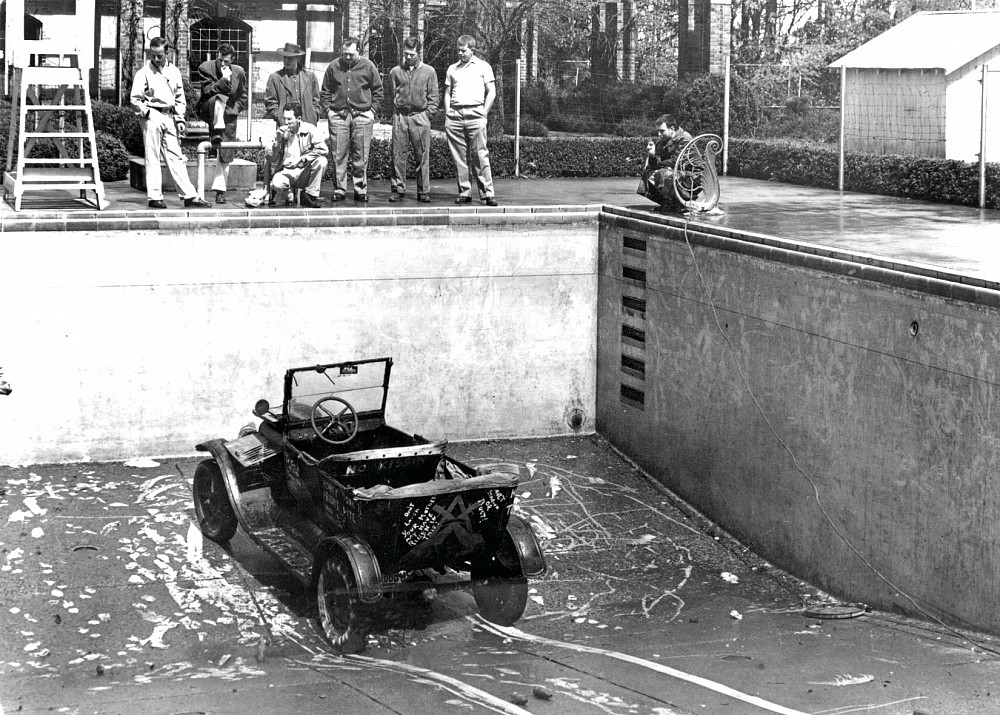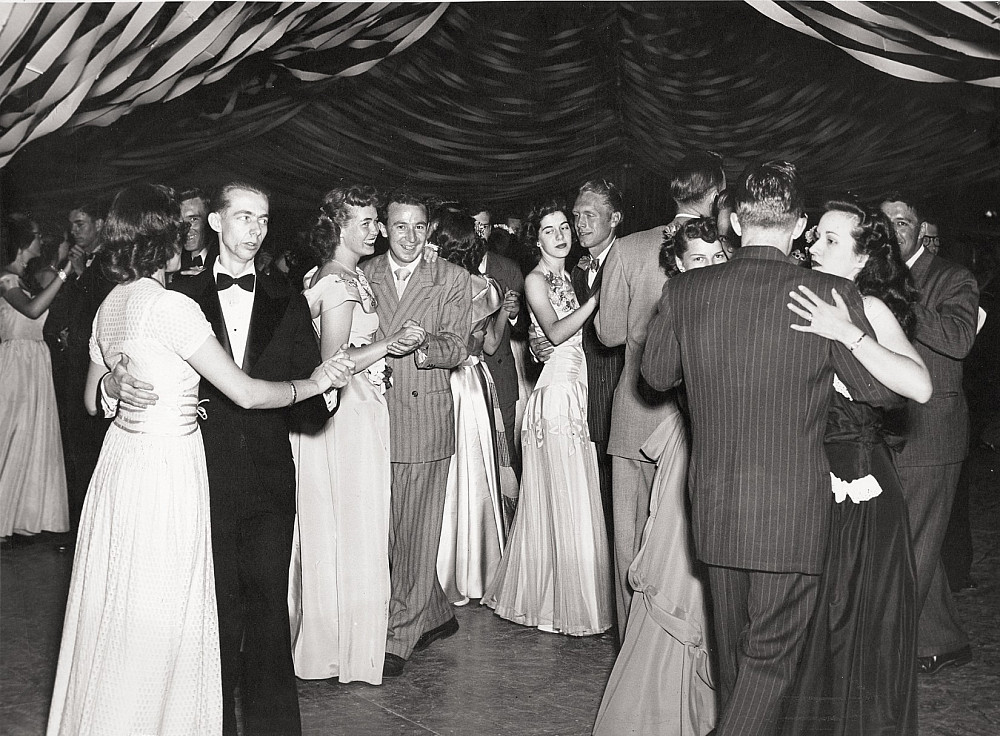main content In Their Own Words: Excerpts From the Alumni Oral History Project
-
 On beanies and bows … “Freshmen used to have to wear beanies. Little orange and black hats. And the girls had to have—what the heck were those?—bows. Black and orange bows. And I remember Otto Sack—he was the gardener. He was a nice old guy and would put on his beanie too, so every year, he was a freshman.” —John Marandas BS ’62
On beanies and bows … “Freshmen used to have to wear beanies. Little orange and black hats. And the girls had to have—what the heck were those?—bows. Black and orange bows. And I remember Otto Sack—he was the gardener. He was a nice old guy and would put on his beanie too, so every year, he was a freshman.” —John Marandas BS ’62 -
 On the standout choir director … “We had an excellent choir director, L. Stanley Glarum. He was a funny little round fat man, who directed the choir with a minimum of movement—just with fingers, and sometimes just with one finger. There was a time when, just to prove that he could do it, he directed an entire piece of rather difficult music with just his eyebrows. Yeah. And, by golly, the choir did it. The sound that was produced was wonderful.” —Hugh Harcourt BA ’52
On the standout choir director … “We had an excellent choir director, L. Stanley Glarum. He was a funny little round fat man, who directed the choir with a minimum of movement—just with fingers, and sometimes just with one finger. There was a time when, just to prove that he could do it, he directed an entire piece of rather difficult music with just his eyebrows. Yeah. And, by golly, the choir did it. The sound that was produced was wonderful.” —Hugh Harcourt BA ’52 -
 John F. Kennedy came to campus to give a convocation when he was running for president against Richard Nixon. Before going into the convocation—it was held at Pamplin—there were a lot of young Republicans who were passing out Nixon buttons. I ended up with one and stuck it in my pocket. After the convocation, I was waiting for a friend by a side door. And the next thing I know—the door opens up, and who’s there? John F. Kennedy. We just eyeballed one another. And, oh my God, I knew I had to say something, so I told him I really enjoyed his answers to our questions. When I was talking to him, I was sort of sheepishly trying to figure out what else to say. I put my hand in my pocket, and I felt the button. So I pulled the button out and said, “Oh, by the way, I won’t have any more need for this.” And I gave it to him. And his reaction was, “Hey, this is one more out of circulation.” — John Marandas BS ’62
John F. Kennedy came to campus to give a convocation when he was running for president against Richard Nixon. Before going into the convocation—it was held at Pamplin—there were a lot of young Republicans who were passing out Nixon buttons. I ended up with one and stuck it in my pocket. After the convocation, I was waiting for a friend by a side door. And the next thing I know—the door opens up, and who’s there? John F. Kennedy. We just eyeballed one another. And, oh my God, I knew I had to say something, so I told him I really enjoyed his answers to our questions. When I was talking to him, I was sort of sheepishly trying to figure out what else to say. I put my hand in my pocket, and I felt the button. So I pulled the button out and said, “Oh, by the way, I won’t have any more need for this.” And I gave it to him. And his reaction was, “Hey, this is one more out of circulation.” — John Marandas BS ’62 -
 On a favorite gathering spot … “There was a place called the Snack Shack, and that’s where everybody hung out. We didn’t have Templeton Campus Center then. The Snack Shack would probably have 150 or 200 lunch patrons. You saw everybody there.” —Chuck Charnquist BS ’58Robert M Reynolds
On a favorite gathering spot … “There was a place called the Snack Shack, and that’s where everybody hung out. We didn’t have Templeton Campus Center then. The Snack Shack would probably have 150 or 200 lunch patrons. You saw everybody there.” —Chuck Charnquist BS ’58Robert M Reynolds -
 On athletics … “Basketball did well. The gym at that time— the earlier gym—was built during the war, and the floor was plywood. And the floor was probably not too good of plywood— cause you couldn’t get much during the war. So there were places on that floor where you would bounce the ball and it was kind of dead—and our guys knew where those were so they would make sure they drove the other team into there. Oh, another thing was that the swimming team was really big, baseball was big, football … well, they would kill everybody.” —Larry Morrell BA ’54
On athletics … “Basketball did well. The gym at that time— the earlier gym—was built during the war, and the floor was plywood. And the floor was probably not too good of plywood— cause you couldn’t get much during the war. So there were places on that floor where you would bounce the ball and it was kind of dead—and our guys knew where those were so they would make sure they drove the other team into there. Oh, another thing was that the swimming team was really big, baseball was big, football … well, they would kill everybody.” —Larry Morrell BA ’54 -
 On homecoming … “Homecoming was a big deal. In fact, for at least three homecomings I can remember, we used to have a parade up Broadway. We had floats, a marching band—the whole shootin’ match. And then a homecoming football game.” —Jack Venables BS ’56
On homecoming … “Homecoming was a big deal. In fact, for at least three homecomings I can remember, we used to have a parade up Broadway. We had floats, a marching band—the whole shootin’ match. And then a homecoming football game.” —Jack Venables BS ’56 -
 On fraternities and sororities … “We didn’t have a house, we weren’t national. And we were proud that we weren’t national. If I had to describe them, I’d say they were more of a service club with a Greek name. You were under charter by the college, so everything we did had to do with life on campus.” —Chuck Charnquist BS ’58
On fraternities and sororities … “We didn’t have a house, we weren’t national. And we were proud that we weren’t national. If I had to describe them, I’d say they were more of a service club with a Greek name. You were under charter by the college, so everything we did had to do with life on campus.” —Chuck Charnquist BS ’58 -
 On campus shenanigans … “Miriam Holcomb and I were good friends. Miriam had this older car, not a Model A but of that vintage. One day, we looked in the gym, and there inside the gym doors sits her car! The guys had spent the whole night—they had to have taken those glass doors off—to get that car in there. She was just floored. She thought, “How am I going to get that out of there?” But Dr. Odell made them take it out. One time, the swimming pool was empty, so they put the car in the swim- ming pool. Yeah, Miriam’s car got in the swimming pool!” —Janice Cox CAS ’55
On campus shenanigans … “Miriam Holcomb and I were good friends. Miriam had this older car, not a Model A but of that vintage. One day, we looked in the gym, and there inside the gym doors sits her car! The guys had spent the whole night—they had to have taken those glass doors off—to get that car in there. She was just floored. She thought, “How am I going to get that out of there?” But Dr. Odell made them take it out. One time, the swimming pool was empty, so they put the car in the swim- ming pool. Yeah, Miriam’s car got in the swimming pool!” —Janice Cox CAS ’55 -
 On fraternities and sororities … “And here’s the thing about the fraternities: They were all very strong, and the people in them were all the leaders of the school. Of course, the national fraternities would come here and they wanted to absorb us, you know? To take us in. Anyway, they wouldn’t take us because we had a non–racial discrimination clause, and it made them real unhappy.” —Larry Morrell BA ’54
On fraternities and sororities … “And here’s the thing about the fraternities: They were all very strong, and the people in them were all the leaders of the school. Of course, the national fraternities would come here and they wanted to absorb us, you know? To take us in. Anyway, they wouldn’t take us because we had a non–racial discrimination clause, and it made them real unhappy.” —Larry Morrell BA ’54
L&C Magazine is located in McAfee on the Undergraduate Campus.
MSC: 19
email magazine@lclark.edu
voice 503-768-7970
fax 503-768-7969
The L&C Magazine staff welcomes letters and emails from readers about topics covered in the magazine. Correspondence must include your name and location and may be edited.
L&C Magazine
Lewis & Clark
615 S. Palatine Hill Road
Portland OR 97219
